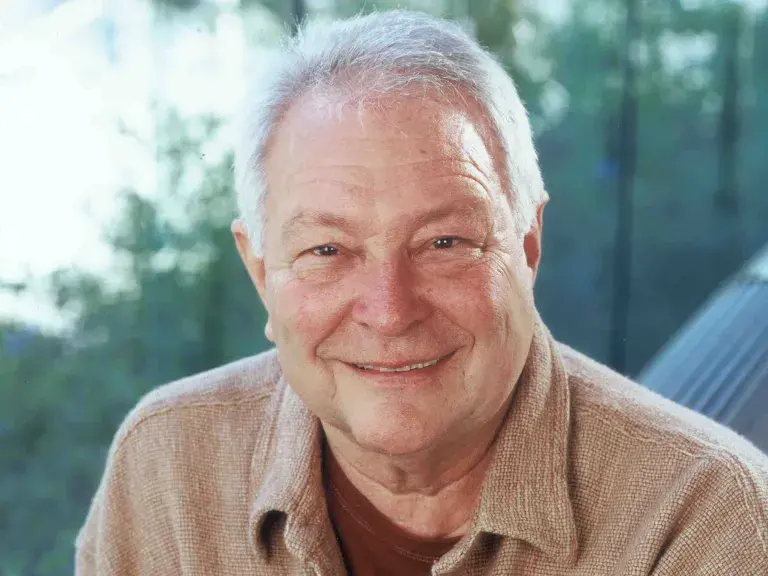
"After silence that which comes nearest to expressing the inexpressible is music," writes Aldous Huxley. True! Musicians know this with certainty, with enthusiasm (from the Greek, "en theos," enlivens our extravagant, passionate inner self with a conviction of worthiness that gives life meaning). We make a difference in the world. And, we get paid for it!
Why do we do what we do? Do we have a choice? I think not. We teach what we need to learn.
At 7 I sang solos, at 12 I bought the Preludes and Fugues, at 13 I played horn in the high school band. Oh, how the melody of Bist du bei mir, played by the horns, soared through our gymnasium. It was like a cathedral and I was transported. Then came chorales and cantatas in college and later the Mass in B Minor and the Passions. It has been a long and wondrous journey with Bach, a composer who has always plumbed faith with a depth and confidence that continually teaches me. Even as a boy soprano I felt a direct bond between singing and a higher power, the connection between the human and the divine, the temporal and the eternal.
What drew me to music? Which works in the choral canon are my favorites? For me, the B Minor followed by the Requiems of Brahms and Verdi and Mozart, Beethoven's Missa Solemnis, Haydn's Creation, Mozart's Mass in C Minor, Mahler's Choral Symphonies, and the works of Schubert, Liszt, and Dvorak. Don't forget Verdi's Quattro Pezzi Sacri, Brahms's Näenie, Triumphlied, Schicksallslied, and Alto Rhapsody. And from the 20th and 21st centuries: Lutoslawski's Trois Poèmes D'Henri Michaux, Schoenberg's Friede auf Erden, Poulenc's Stabat Mater and Gloria, Stravinsky's Symphony of Psalms, Penderecki's St. Matthew and Credo, John Adams's Harmonium, El Niño, and A Flowering Tree, and the unique choral voices of Meredith, Monk, and Tavener. These masterpieces have stood the test of time and may be savored and enjoyed over and over again.
Text makes choral music unique. Singers carry the meaning, the language inflection, and, if there are instruments, they underscore the text with colors, rhythms, and dynamics. Together they reveal the truth beyond the vision, the truth beyond notation. Margaret Hillis used to say, "Music happens between the notes." As artists we seek to perform the truth. I believe the experience of this truth changes performers and audiences alike.
Singers carry the meaning, the language inflection, and, if there are instruments, they underscore the text with colors, rhythms, and dynamics. Together they reveal the truth beyond the vision, the truth beyond notation.
I luxuriate in music that moves me: the form and style in Purcell's "Lament" from Dido; the passacaglia in Bach's B Minor "Crucifixus"; Monteverdi's arresting harmonic shifts, lower major-minor mediants that expand and make your head swim; the harmonies of "Poor Judd is Dead" from Oklahoma. For sheer virtuosity and effect, the fugues and the final "Gloria" shouted to the cosmos in Beethoven's Missa are stunning contrasted with the profound descent of the Holy Spirit scored for two flutes and solo violin.
In Bach's St. Matthew, strings draw the listener to Christ's words, and Haydn's polyphony for low strings depicting the creatures in Creation is stirring. But for sheer, sensuous sonority, Schubert's Gesang der Geister über den Wassern set for eight men's voices, contrabass, celli, and violas wins the prize.
I have to choke back the tears when conducting the finale of Bernstein's Candide or the minor 7ths in "There's A Place For Us" from West Side Story. My breath is taken away by the grandeur of the Hymn opening Mahler's Eighth Symphony and the vast, spiritual landscape of Faust's essence being borne to heaven by the "eternal feminine" in part two.
Music touches our hearts, shapes our humanity, and teaches our vulnerable, inner beings. I suspect for many of us our chorus becomes our life. After 23 years with the San Francisco Symphony Chorus my mantra is, "I love it and I let it go." I say this aloud to myself under the applause with every bow at the end of a concert. It is a kind of harbinger of the big letting go.
The wondrous beauty and sheer brutality of life is what we bring to audiences. Everything we know and feel is ours to express, the love requited and unrequited, the hope and the gratitude. We mortals search for the transcendental and eternal, a mystical experience that honors the reasons that reason does not know.
Coda: Who knows what musical possibilities and growth lay ahead? I look forward to projects, guest conducting, workshops, travel, and more. Engage me. I am turning a new page, and as long as I have health, I will continue to make music.
This article is adapted from The Voice, Summer 2006.

